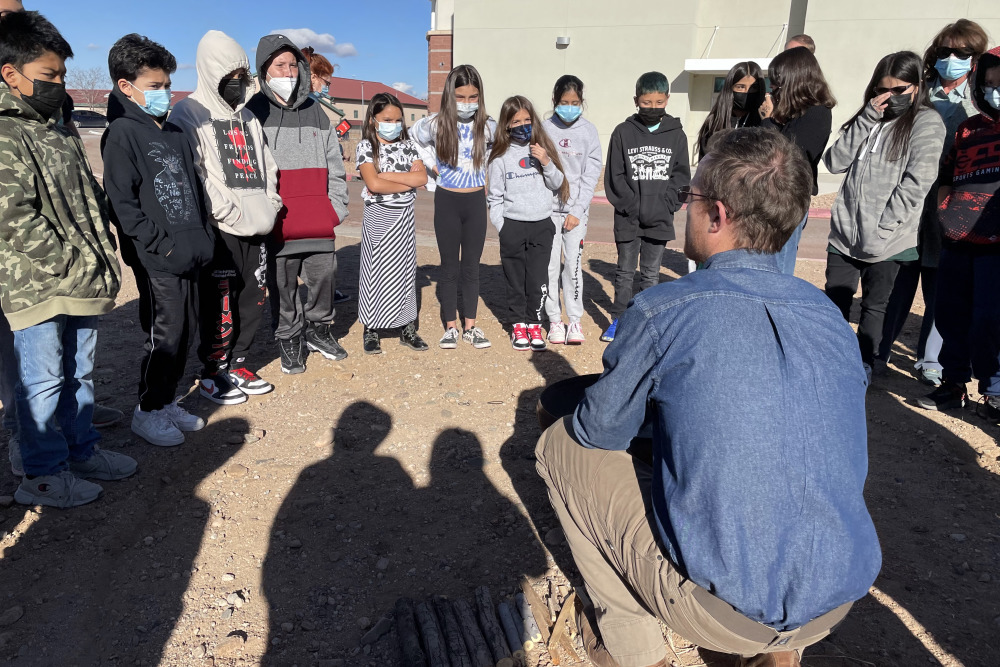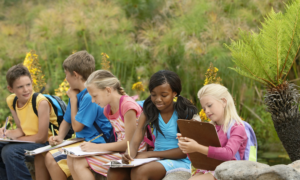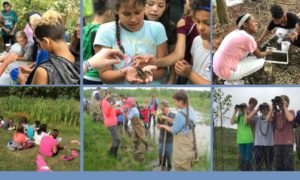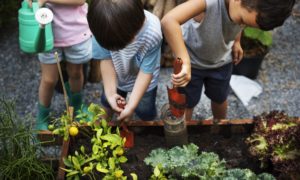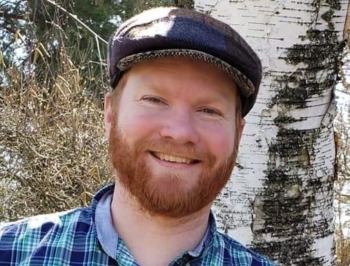
Courtesy of Andy Epton
Earth and environmental science and astronomy teacher Andy Epton said he learned “almost nothing about climate change” in his college studies.
When he was hired 10 years ago to teach earth science in Virginia, Andy Epton had to create lessons on climate change from scratch. The textbook he inherited was so old it still classified Pluto as a planet, and Epton had learned “almost nothing about climate change” in his college studies.
“I felt woefully unprepared,” he said.
Now, after years of online research and refining his own lesson plans, he concludes each term with a week on the topic.
“Students tend to remember the last thing that they learn,” said Epton, who now teaches earth and environmental science and astronomy at Henry Ford Academy in Dearborn, Michigan. “I use it as a kind of wrap-everything-up, let’s tie it all together. This is why we need to learn earth science. This is why we need to learn environmental science.”
Epton’s experience — lacking climate change training initially, then seeking out resources to teach it in more depth — follows national trends in how schools teach about climate change.
Over the past nine years, 45 states and the District of Columbia have adopted fully or subscribed to the spirit of the Next Generation Science Standards (NGSS), which include emphasis on “human impacts” on the environment for middle schoolers and the impact of “human activity” on climate change for high schoolers.
The standards — which states developed in partnership with national science and science education groups — describe knowledge and skills that students should master at each grade level. They are the framework upon which textbooks, lessons and tests are built.
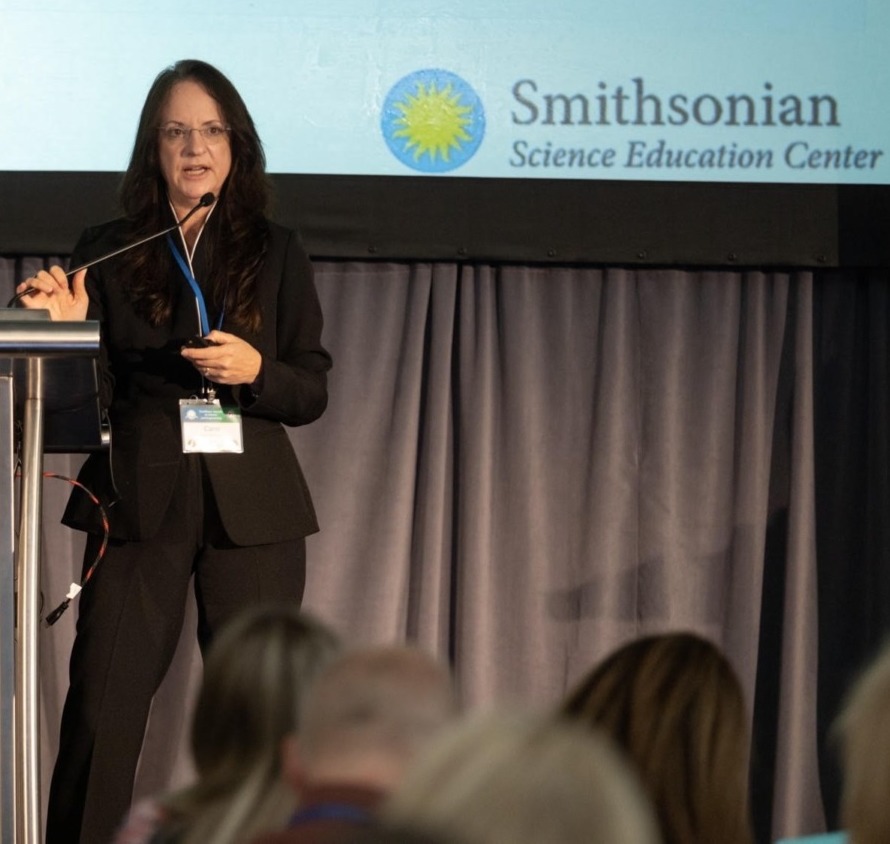
Courtesy of Carol O’Donnell
Carol O’Donnell is director of the Smithsonian Science Education Center,
While science education advocates hailed the new standards as a major step forward in climate change education, many states paid relatively little attention to preparing teachers for this major shift, said Glenn Branch, deputy director of the National Center for Science Education (NCSE) in Oakland, California.
Today, many teachers have little or no formal training about climate change, much less about how to teach it, and what students learn about climate change can vary widely from state to state and even classroom to classroom. While some students participate in carefully planned, in-depth lessons on climate change’s causes and possible solutions, many hear little about it in school.
Since a 2014 survey found that 57 percent of science teachers had no formal training about climate change, there has been “some change for the better, but not in a big way,” Branch said.
Carol O’Donnell, director of the Smithsonian Science Education Center, and colleagues reach more than 500,000 U.S. students annually with their educational materials, supplementing what is already occurring in classrooms.
“The challenge we find at the Smithsonian is that school systems in the U.S. are not set up to allow for these much more complex, ‘wicked’ problems, or what we would call socio-scientific issues to be taught, because a teacher who teaches science in a middle school is addressing science standards. A teacher who is teaching social studies is addressing social studies standards,” she said. “Teaching climate change requires all of that.”
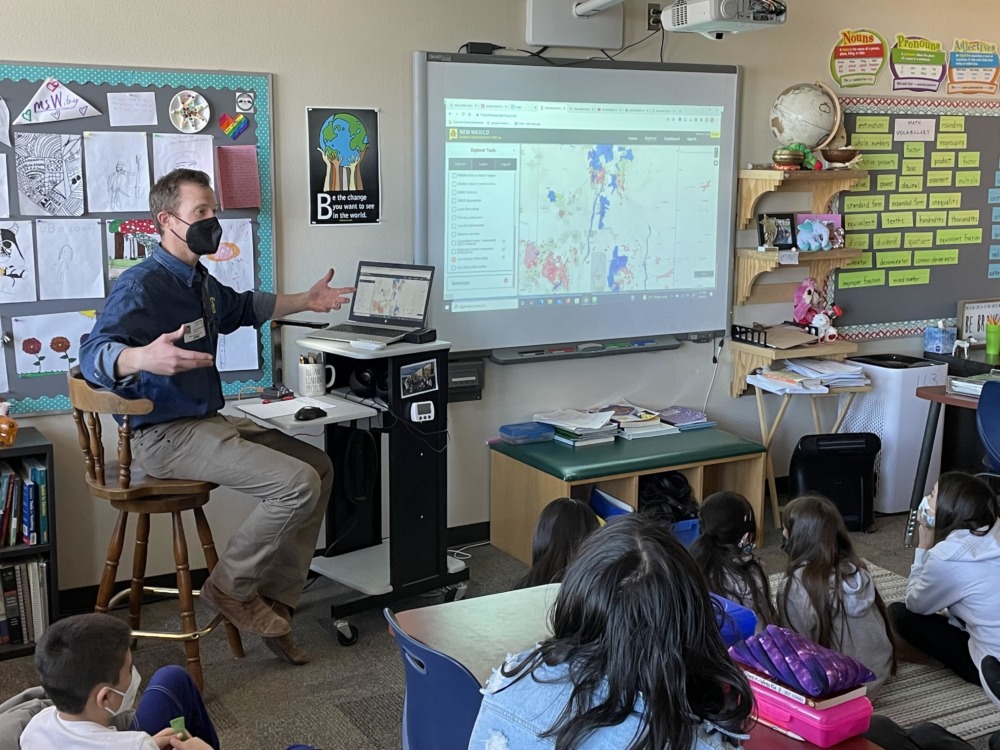
Courtesy of Climate Advocates Voces Unidas
Forest Restoration Officer Jacob Pederson talks with fifth graders at Aspen Community School in Santa Fe, N.M. about wildfires and aridication.
One of many organizations nationally that supplements uneven climate change instruction in middle and high schools is Santa Fe-based Climate Advocates Voces Unidas. The group’s three-year-old Climate Innovation Challenge trains teachers to work with students to create two- to four-minute videos about a climate-related topic.
“It gives students a way to process what they are seeing, and a way to engage these issues using their skill sets,” said CAVU Education Director Phil Lucero. “Our goals are about the individual. How can we help students find that strength within themselves to rise up and be a part of the solution, and to really find their own path forward.”
Many teachers have taken the initiative to build their own lessons on climate change, and some have worked together informally to share resources.
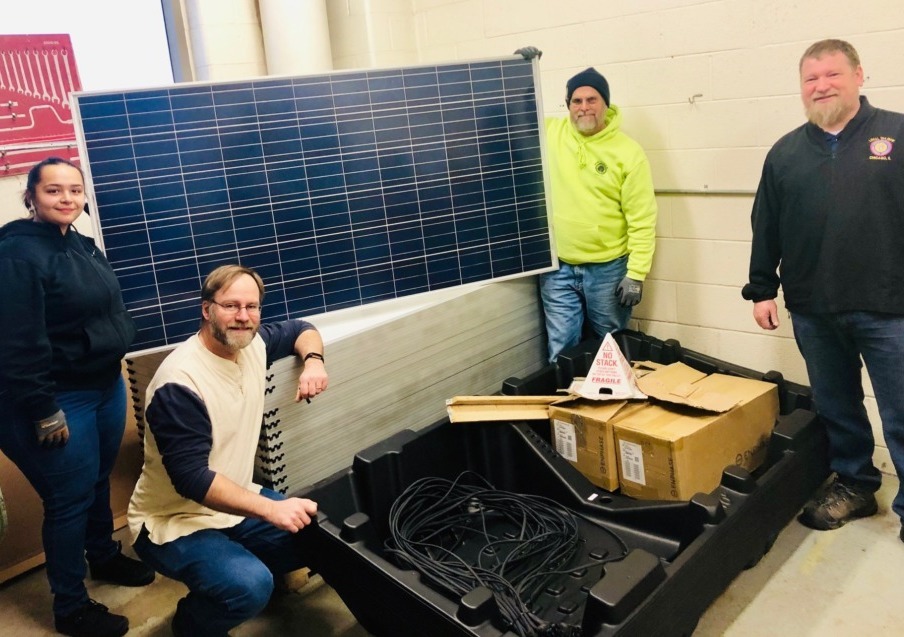
Courtesy of James Klock
Benito Juárez Community Academy student Jazzlyn Lopez (left) stands with instructors James Klock and Tracy Hall and Illinois IBEW Renewable Energy Fund Manager Robert Hattier. The school’s Juarez Solar Academy is a partnership between the school and the I.B.E.W. Local 134 Renewable Energy Fund.
James Klock, who has taught science for 18 years and now teaches at Benito Juárez Community Academy in Chicago and at the school’s solar power industry training program, began creating his own lessons on climate change after the documentary “An Inconvenient Truth” came out in 2006. He has used data from National Oceanic and Atmospheric Administration, among other resources, and he and colleagues at other Chicago public schools created a small network to share resources.
In one lesson, Klock has students place plants in glass boxes to monitor carbon dioxide levels over time and observe the greenhouse effect. The class splits up into groups and each creates and monitors a terrarium — about 10 or 15 gallons each — for a different effect.
Related stories
• What are green jobs and how can I get one? 5 questions answered about clean energy careers
• UN report: Today’s children will see massive increase in climate extremes
• As air quality worsens, so does childhood asthma
• Hurricane Maria devastated her home. Now, this teen is helping put survival kits in Florida libraries
• Youth and climate change: How a generation is adapting while fighting for their future
One senior contacted Klock after the end of the semester to say that he had always heard that climate change was important, but now he finally got it.
“That was a great day,” Klock said.
David Amidon, a science teacher at LaFayette Junior-Senior High School, located about 10 miles south of Syracuse, New York, has taught middle school science for 23 years. When he first started teaching, human impact on climate change was part of the middle school standards.
“I didn’t get a lot of that in college,” he said, so Amidon conducted his own research on the then-infant internet.
He drew in particular on the writings of climate change communication researcher John Cook, who founded the site Skeptical Science. Two decades later, Amidon now devotes between two and four weeks to climate change in a typical term.
Amidon usually teaches students about the ozone hole at the beginning of the academic year, since depletion tends to occur in September. He focuses on data and interpreting modeling, where he thinks there is an optimistic story to tell students.
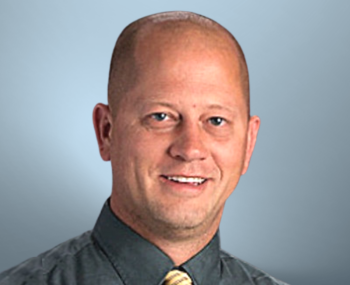
Courtesy of David Amidon
LaFayette Junior-Senior High School science teacher David Amidon usually teaches students about the ozone hole at the beginning of the academic year, since depletion tends to occur in September.
“That’s a story that has got a better ending, because things are definitely improving,” he said of the ozone hole. “It’s not all gloom and doom.”
In one project, he has students break into groups and gives each group two two-liter bottles. Students insert an Alka-Seltzer tablet in one of their group’s bottles and track temperature changes in the bottles as the tablets create carbon dioxide, modeling how carbon dioxide can increase temperatures globally.
For Nora Henning, a junior at North Central High School in Spokane, Washington, most of what she learned about climate change came from home, where her family emphasized environmental activism.
This year, Henning is one of 15 students at her school — out of more than 600 juniors and seniors — taking an AP environmental science elective, which addresses climate change extensively. Climate change came up briefly in her AP biology class, but the environmental science elective is the only time she recalls learning about climate change in a rigorous way in high school.
As a freshman, she and her classmates organized an online town hall about climate change education with school board members and about 150 students, which eventually led to the creation of the Student Advisory Council on Climate Change for Spokane Public Schools. Henning is president and a co-founder.
At the town hall, the message from students about lessons on climate change was clear, said Henning.
“Overwhelmingly, what we heard from a diverse group — age, school, classes, difficulty of classes — was that they weren’t seeing it at all,” she said.
***
Menachem Wecker is a freelance journalist based in the Washington, D.C. area. A former education reporter at U.S. News & World Report, he covers arts and culture, religion, politics, chess and other subjects for Washington Post Magazine and a variety of other print and online magazines and newspapers.


